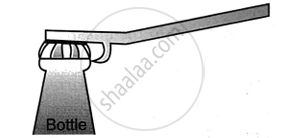Advertisements
Advertisements
प्रश्न
State three differences between the three classes of levers.
उत्तर
| Class I | Class II | Class III | |
| 1. | It has the fulcrum between the load and effort. | It has the load between the fulcrum and effort. | It has an effort between the fulcrum and the load. |
| 2. | The effort arm can be shorter, equal to or longer than the load arm. | The effort arm is bigger than the load arm. | The effort arm is always shorter than the load arm. |
| 3. | The mechanical advantage can be less than, equal to, or greater than 1. | The mechanical advantages are always greater than 1. | The mechanical advantages are always less than 1. |
| 4. | The load and effort are in the same direction. | The load and effort are in opposite directions. | The load and effort are in opposite directions. |
APPEARS IN
संबंधित प्रश्न
Which class of lever has the mechanical advantage always more than 1? Give an example.
Name the class to which the following lever belong:
A pair of scissors
Name the class to which the following lever belong:
a lemon squeezer
Name the class to which the following levers belong:
a pair of pliers
Name the machine to which the following belong:
Beam balance
Answer the following in a word or two or in a sentence.
Given an example of a Class I lever.
Answer the following in a word or two or in a sentence.
Give one example of a machine used to multiply speed.
Explain why the mechanical advantage of the class III type of lever is always less than 1.
Lemon juicer belongs to which type of lever? Why?
Name the class of the lever shown in the picture below:

